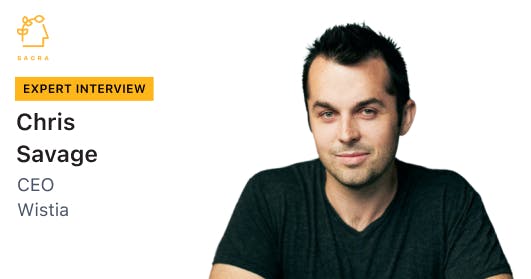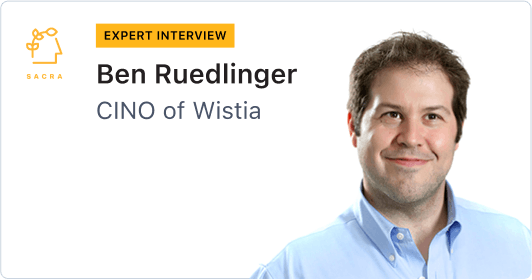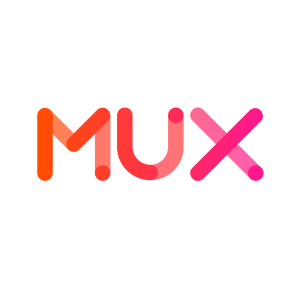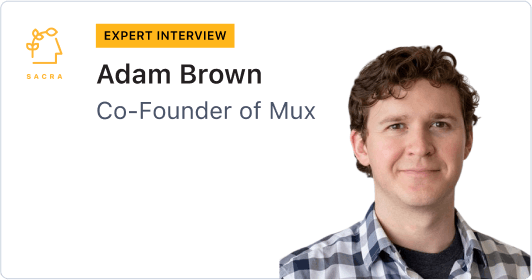Ezra Fishman, VP of Growth at Wistia, on the resurgence of the webinar
 Marcelo Ballvé
Marcelo Ballvé
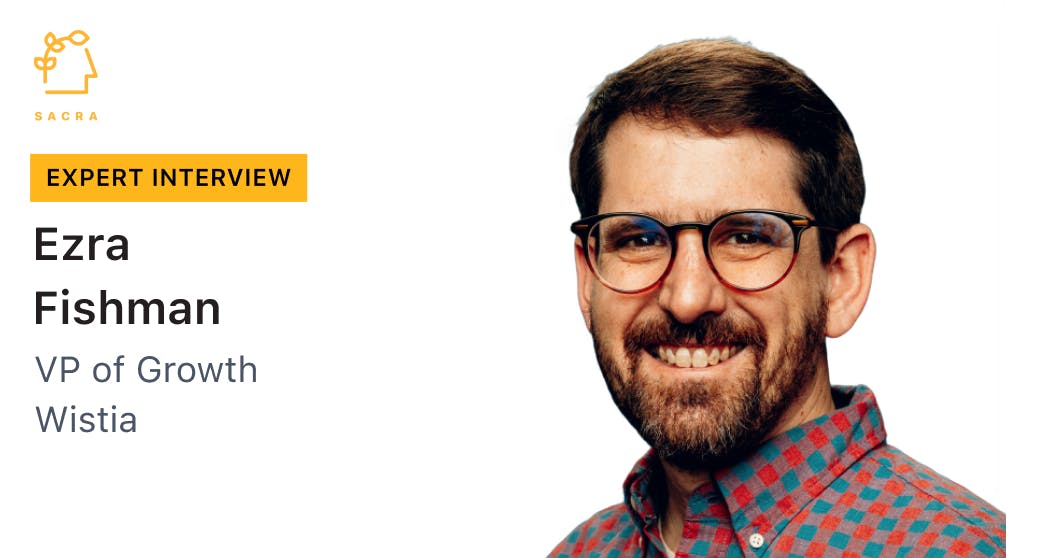
Background
Ezra Fishman is VP of growth at Wistia. We talked to Ezra about the increasing importance of webinars and live events for marketing teams, and dug into Wistia's decision to launch an all-new webinar product in late 2023. We also discussed how Wistia plans to compete with larger companies like Zoom, which are entering the webinar-software market from different verticals, including virtual meetings and events.
Questions
- What are you seeing out there in terms of webinar usage and are there any tailwinds or anything about that use case that make you particularly excited about it? Any hypotheses about why it's something to be excited about?
- Would you dispute the characterization that webinars sit somewhere in the middle of the marketing funnel? Would you say it's more toward the top of the funnel? Does it matter to Wistia either way where something sits in the funnel?
- In terms of the product experience, I saw in your marketing video that you were able to track leads and manage leads within the webinar product. Can you tell me about whether that’s a new thing for Wistia, engaging so directly with the raw leads, and how you thought about incorporating that aspect?
- Is there something in the product that enables you to power Simulive experiences, or is that just something you've observed as a use case that’s potentially something you can promote as you sell the product? I guess the question is, are there particular features that enable Simulive or not?
- There's folks competing in the webinar market from several different directions and you don't always see this, when categories clash, but in this one there's potentially four categories clashing. Like the Zooms that are coming at this from the video call perspective, the virtual events providers are coming from the virtual event side, and folks like Vimeo or Wistia are coming from more like a video-native or video-hosting perspective, and then there's point solutions. How do you think about Wistia’s positioning currently? Did I leave anything out? Do you think that there's unique advantages in terms of the vector you're coming from compared to these others?
- Concerning who the buyer is for Wistia, it seems like, potentially, the bigger a company gets, even a medium-sized company, the more likely it is that someone more technical gets involved in the purchase. But it seems like your core buyer is a non-technical marketer? I'm just curious if A, am I wrong about that and B, do you think webinars would change that mix at all?
- Okay, that makes sense. And that's 80/20 as well??
Interview
What are you seeing out there in terms of webinar usage and are there any tailwinds or anything about that use case that make you particularly excited about it? Any hypotheses about why it's something to be excited about?
There are a few things. There's Covid-19, and people thinking about how to do things virtually, people thinking about events and virtual events and how much they can do their marketing online. There was some amount of push to virtual events to webinars, and webinars have also just stood the test of time in some ways. It’s a piece of the marketing puzzle for us, there's a particularly interesting piece, because it is very tied to leads and the sales funnel in a way that the rest of video isn't always as closely tied. Video is used in a lot of ways, but a lot of it's about brand, a lot of it's about these things that are less closely tied to the dollars. We see that in how the webinar products themselves are priced. They're more expensive.
Part of that has to do with the underlying technology and how hard it was to put on webinars and power webinars in the past, but part of that is also driven by just the willingness to pay for a thing that’s like, ‘hey, this is driving leads for my business turning into ROI, therefore I'm willing to pay more of a premium.’ From a business perspective, that’s definitely interesting to us in terms of ‘hey, as a video product, we are head-to-head with Vimeo and YouTube.’ There's a lot of free, very affordable offerings, a lot of races to the bottom on the ‘hey, just put video onto your website and do that.’ Webinars from a business opportunity, feels different than that, feels like an area where there's more direct ROI and willingness to pay.
That part is interesting from a business perspective. From an overall usage and adoption perspective, we've monitored and known for years that a lot of the content that people are putting onto the Wistia platform are webinars. We've been tracking title keywords and things for years and knowing, ‘hey, this is a common thing that people are using, and, unsurprisingly, putting on Wistia to host after the fact.’ We know our customers are already doing it. We know lots of people—there's lots of surveys out there about how many mid-size businesses are using webinars, using webinars once a month, and more than once a month. It's a pretty common tactic. There's a frequency to it, as well, that’s exciting for us as a business. We want people to be continuing to make videos, using the platform, looking at the analytics, and taking action on the platform. All those parts make it exciting to us.
There's also an exciting story part of it, that’s just the power of a single platform, as opposed to you have your webinar tool and then you have to download it and put it in your video hosting tool, and you have to go to another tool to edit it, and you have another tool to make video highlights. Part of our vision for Wistia is that it will be a tool that can bring a lot of that together and we think this use case is, in some ways, the perfect use case. Because it is a situation where companies can go live with their events, but then immediately publish it after the fact, and start generating leads with it. Then they can in, do some trimming, fix it, save it, do some trimming, and highlight a couple of things that they can put on social media, and then look at the analytics for both the live and the recorded event together. I think that story is compelling, and we're hoping it is compelling in the market.
Would you dispute the characterization that webinars sit somewhere in the middle of the marketing funnel? Would you say it's more toward the top of the funnel? Does it matter to Wistia either way where something sits in the funnel?
I wouldn't dispute it, I think that's right. It also doesn't matter, per se, to us where it fits in the funnel. It’s a somewhat generic tool and methodology that actually has a place in all the parts of the funnel.
Probably the most common is the middle of the funnel, and where we would talk about it as like, ‘hey, here's this really powerful tool,’ that's probably where we would emphasize. But there are definitely use cases that are more top of the funnel. There are interesting use cases where it’s being used for customer success and in a customer-focused way, that are all about the expansion and deeper engagement with customers that are not new customer acquisition-focused at all. That's probably how we would talk about it and think about it is like, ‘hey, here's this medium, this presentation format that you can actually use in a bunch of different places. Here's where people are using it very successfully here in the middle of the funnel. Here's where some other people are using it here and here.’
In terms of the product experience, I saw in your marketing video that you were able to track leads and manage leads within the webinar product. Can you tell me about whether that’s a new thing for Wistia, engaging so directly with the raw leads, and how you thought about incorporating that aspect?
No, it’s not a new thing. Years ago Wistia introduced Turnstile — it's a lead capture form that you could basically put on any video — so, you have an hour-long video on your website that you want to gate. You could put this form in front of it and say, ‘put in your email address to watch this video’ or put it at the end. That's been a functionality of Wistia's for eight years, so we've had that functionality and talked about that as ‘hey, here's leads that you're generating with video where you can pipe that into your other tools, like email providers or marketing automation platform.’ As you're connected to the market automation platform, you can then see what other video viewing behavior looks like, and tell a more holistic story about how video is influencing your leads. You can do scoring based on which videos people are watching, all that.
That's been part of the Wistia story, and I would say our “advanced users” are doing lead capture, lead management, and lead scoring with video, along with connecting to a Marketing Automation Platform (MAP). Webinars just really add fuel to that fire in a very big way, because sure, you can do that for a video, but it needs to be a certain quality of video before you can really justify it, where webinars, it's an expectation that there's a lead form, and the sign up registration is part of the process. So you just get to do it and you have permission to do it a lot more. Then, internally we have doubled down on that emphasis of ‘hey, leads are a really valuable thing, obviously, but hey, we should emphasize that as part of our inside the product and our go-to market.’ Because that's something that we can actually stand on compared to say the Vimeos or the YouTube—they don't have strong robust connections to marketing automation and they're not as centered on capturing leads and doing these things.
A lot of what we believe, internally, about the power of video is that there's a human element, there's an element that brings your company to life. There's an element that builds trust—and those things are incredibly hard to measure on a kind of ROI level or trying to ascertain ‘how did this one thing affect this?’ Our website is not filled with things like ‘hey, video increases ROI by 22% and if you put three videos in your email, you'll double your conversion rates.’ That's not prominent in our messaging.
We do believe in the power of video. We know those stories and those anecdotes are helpful, and at the same time we know that the world is a little bit messier than that and it feels false to spout some of that. And again, that's where the power of webinars come in, because it is a more direct line to say, ‘hey, you're doing these webinars, especially in these early funnels and you're bringing in next number of leads or you're taking leads and moving them down the funnel and that's very powerful.’
Is there something in the product that enables you to power Simulive experiences, or is that just something you've observed as a use case that’s potentially something you can promote as you sell the product? I guess the question is, are there particular features that enable Simulive or not?
Today there's not, but that is on the roadmap, because we've heard requests for everything from ‘we want the whole event to be recorded and I want to just interact on chat,’ all the way to, ‘I want to have segments of it pre-recorded, and I want to go in and out.’ We've heard requests for that range, and on the roadmap I think it’s an obvious tie-in to talk about how Wistia is your complete platform that helps you take the recordings of your events and repurpose them again as simulated live and it ties to that story.
There's folks competing in the webinar market from several different directions and you don't always see this, when categories clash, but in this one there's potentially four categories clashing. Like the Zooms that are coming at this from the video call perspective, the virtual events providers are coming from the virtual event side, and folks like Vimeo or Wistia are coming from more like a video-native or video-hosting perspective, and then there's point solutions. How do you think about Wistia’s positioning currently? Did I leave anything out? Do you think that there's unique advantages in terms of the vector you're coming from compared to these others?
I feel like that it's two-part question actually, because one part is the positioning around the webinar space. Then, there's the other question about how do you position this product, because is it about webinars or about, is this about live events? Is this about live-streaming? To get to the first one, I think yes, the advantages are this complete platform solution. The ability to do the event, but then turn it into an asset, and immediately take action on that, and have that all be together and tell the story holistically, and look at all the analytics together. I see that as one of the predominant ones. The other one is the video expertise—Wistia is known for having a good reputation in the space, we spent 12 years teaching people how to make videos.
Chris Lavigne, in particular, as our video producer, has done that, and has a lot of credibility probably in a smaller niche of ‘hey, this is how you create great looking video for business.’ That also translates to webinars, and he's been doing custom webinars with multi-camera and things like that for a long time. It’s probably secondary, but there's some credibility in ‘how do you make great looking and engaging webinars’ derived from there. There's some obvious headwinds, with Zoom,just that everyone already has that tool, so they might as well use the tool they have that they’re already paying for and doing other things with. Again, I think that's a little bit of the situation we find ourselves in with YouTube and Vimeo. There's a little bit of a default solution already out there, and so you have to overcome that—the default is ‘let's just use this thing that we already have.’ Then, obviously, we're a little bit newer to the market and don't have as much focus on this, the Wistia story we’re telling is broader.
There's certainly some challenges there, but I also look at the existing products and say they're not very compelling. There are some newer entrants into the space that are more compelling from a visual perspective, from a ‘hey, let's make this a beautiful, engaging experience.’ I think that is one place we'll have to see where that shakes out.
Concerning who the buyer is for Wistia, it seems like, potentially, the bigger a company gets, even a medium-sized company, the more likely it is that someone more technical gets involved in the purchase. But it seems like your core buyer is a non-technical marketer? I'm just curious if A, am I wrong about that and B, do you think webinars would change that mix at all?
You’re not wrong about that and I don't think it will change. My guess is that the most common buyer at these medium-sized companies is the non-technical marketing manager or the director of marketing etc. We also just get a variety of everything, because video is used by so many different people and for so many different purposes. Internally, we say, ‘hey, our bullseye is that marketing team, because they predominantly own video and do video.’ But we get the head of sales, we have the CEO of tiny companies, we have people in support, you name it, we have it, as well as marketers at all different levels. We have CEOs, we have entry level people, we have folks in design, we have some video producers. I expect that will continue—except with the webinar being again, a little bit of a higher price tag—I think that will move it up a little bit and standardize it a little bit to probably a few roles. The dominant one being marketing, but I certainly would expect a customer success or something in that vein to show up. I think the director of demand gen would be the dominant buyer, that’s what I would expect.
Okay, that makes sense. And that's 80/20 as well??
Yes, with levels being all over the place, but then within the marketing, it is probably more like 70/30 here. One of our challenges over the years has been, who is the buyer? Who is the user? And every time we look at the customer base, it's a little bit of everybody.
Disclaimers
This transcript is for information purposes only and does not constitute advice of any type or trade recommendation and should not form the basis of any investment decision. Sacra accepts no liability for the transcript or for any errors, omissions or inaccuracies in respect of it. The views of the experts expressed in the transcript are those of the experts and they are not endorsed by, nor do they represent the opinion of Sacra. Sacra reserves all copyright, intellectual property rights in the transcript. Any modification, copying, displaying, distributing, transmitting, publishing, licensing, creating derivative works from, or selling any transcript is strictly prohibited.

